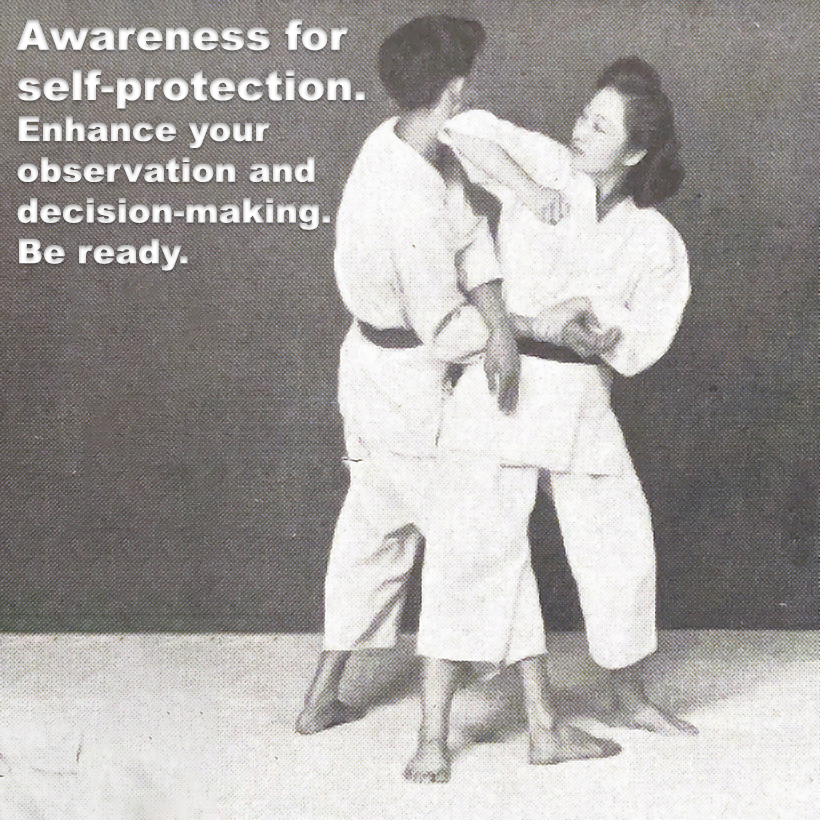
What is awareness and why is it so important?
Posted by ADAM CARTER on DEC 16, 2022

What is awareness and why is it so important?
What is awareness and why is it so important?
The martial arts community tends to focus on the hard skills of using physical force as the answer to all problems, with many dojo implementing a fight first policy, with very little focus on avoidance other than paying lip service to the idea.
By being aware, you may be able to see a potentially life-threatening situation starting to develop. You can then react to the situation faster, perhaps deescalate the situation all together, or avoid it by leaving the area. In order to do this, you will need to develop a high level of situational, environmental, and spatial awareness, as well as your fighting skills.
Avoidance is your best self-defense strategy.
Situational Awareness is being aware of who is in your vicinity and what they are doing. It is based on your ability to use your senses of seeing, hearing, smelling, tasting, and feeling. Your senses need to perceive what’s going on around you and you need to be able to process what your senses tell you.
Self-awareness is crucial in avoiding violence. Your body’s gut reactions are your early warning system of potential danger. But you need to be able to listen to your body’s messages to you. You need to be able to process that you are feeling anxious or uneasy. And you need to give yourself permission to act on what you feel or sense.
Environmental awareness is paying attention to weather conditions and any hazards such as a slippery surfaces, uneven terrain, areas of concealment, areas of darkness or shadows, and possible escape routes.
Spatial awareness is all about proximity: the farther away you are from danger, the more time you have to process what is happening and formulate a more informed response.
When you are in danger, your body will react with natural, gross motor-based responses that are difficult to override under stress. It’s therefore efficient to defend and counterattack with those gross motor movements, building on your natural survival responses.
Your body won’t allow fancy techniques when your survival is at stake. Working with the body’s natural reactions, and training under simulated stress is crucial for realistic training.
Stress simulation and pressure testing drills can program you to react with semi-automatic defenses and counterattacks to certain threats. The more you practice these drills, the more stress-resistant your responses will become.
Without training, stress can cause you to freeze and get hurt while your neural system is searching for a response. Even worse, if you perceive no option to protect yourself, no ability to fight or escape from a potentially lethal threat, stress can cause your neural systems to shut down and to dive into tonic immobility (a rigid, unmoving state in response to intense fear).
Planning for your self-defense and knowing the factors that influence how you might have to fight is not paranoia - it’s preparation. Next time you are out and about, try to pay more attention to who is around you, what they are doing, and how close they are to you, by practicing good situational, environmental, and spatial awareness. Don’t just rely on your fighting skills. Stay alert and stay alive.
